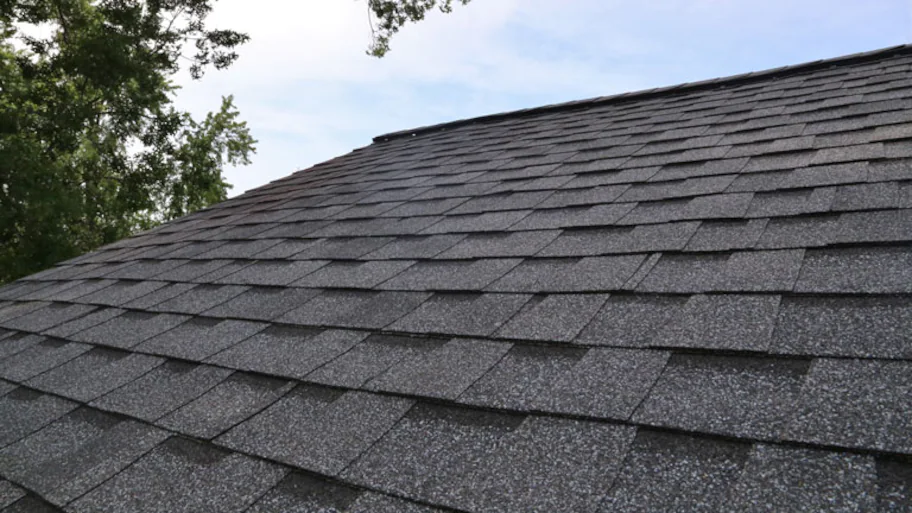Assessing the Solutions Used by Roofing Companies in Gainesville Florida
Best Practices for Ensuring Correct Roofing Ventilation
Making sure appropriate roof air flow is important for the durability and effectiveness of a roof system. A well balanced intake and exhaust air vent ratio, typically 1:300, plays a pivotal role, with intake vents preferably placed at the lower edge of the roof for cool air access and exhaust vents at the height for cozy air exit. Routine examinations to determine clogs and preserve clear air movement are paramount. Additionally, maintaining insulation far from vents is vital to stop air flow constraint. Recognizing these fundamental elements establishes the phase for more thorough understandings into installment and maintenance techniques that can substantially boost your roof's performance.
Understand Air Flow Basics
Appropriately understanding ventilation fundamentals is important for making certain the long life and performance of roof covering systems. Effective ventilation minimizes wetness buildup and temperature extremes in the attic, both of which can cause considerable architectural damage gradually. A well-ventilated roof helps in stopping typical issues such as mold growth, wood rot, and ice dams, which can compromise the honesty of the roof covering materials and the underlying structures.
The primary goal of ventilation is to assist in the motion of air, permitting a constant exchange in between the indoor and exterior atmospheres. This equilibrium is accomplished with a combination of consumption and exhaust vents that work together to maintain ideal air movement. Consumption vents, commonly located along the eaves or soffits, allow fresh air to enter the attic area, while exhaust vents, frequently situated at or near the roofing system ridge, allow warm, humid air to escape.
Key factors affecting the efficiency of roof covering air flow consist of proper positioning, ample sizing, and making certain that both intake and exhaust vents are unobstructed. Routine evaluation and upkeep are important to determine prospective blockages, damages, or inadequacies in the ventilation system, consequently protecting the roofing system's efficiency and resilience.
Types of Roof Vents
Roof vents play an essential duty in preserving efficient attic air flow and, by expansion, the general health of the roof. Various kinds of roofing system vents are readily available, each with one-of-a-kind advantages tailored to particular roofing demands. Ridge vents, for instance, are mounted along the roofing system's top, enabling cozy, humid air to get away from the attic room. They use continual ventilation and blend flawlessly with the roofline, making them both efficient and visually pleasing.

Soffit vents are mounted under the eaves and operate in tandem with roof vents to guarantee a well balanced intake and exhaust system. By allowing cooler air to get in from below, soffit vents promote the expulsion of warm air through upper vents. Gable vents, situated on the outside walls of the attic, deal an additional efficient remedy, especially in homes with gable roofing systems.
Evaluate Your Current Ventilation

Following, think about the age and condition of your roof covering materials and air flow parts. Older systems might not adhere to present building codes or might have degraded gradually, reducing their efficiency. Conduct a detailed assessment to identify any kind of indicators of deterioration, such as corrosion, damage, or voids that might compromise the system's efficiency.
Additionally, determine the attic room temperature and moisture levels. High temperatures and moisture can show poor ventilation - roofing companies gainesville florida. Make use of a hygrometer and thermometer to acquire exact readings, comparing them with exterior problems. Consistent discrepancies recommend potential problems that require addressing.
Installation Best Practices
Effective installment of roof covering ventilation systems is paramount for ensuring ideal efficiency and long life. Correct setup starts with recognizing the certain air flow needs of the structure and the roofing it covers. This entails calculating the appropriate proportion of consumption to tire vents, typically sticking to the 1:300 regulation, which specifies one square foot of ventilation for every 300 square feet of attic floor room.

The positioning of vents is similarly critical. Consumption vents should be installed at the roof's lower side, commonly Home Page in the soffits, to enable trendy air to go into. Exhaust vents, on the various other hand, must be mounted near or at the roofing system's optimal to help with the departure of warm, damp air. This develops an all-natural air movement that assists keep temperature level and dampness balance within the attic area.
Seal all vent links thoroughly to prevent air leaks and prospective water infiltration. Use top notch products and follow producer guidelines to guarantee longevity and performance. Additionally, incorporating ridge vents with baffles can dramatically enhance air flow performance by stopping wind-driven rain and snow from entering the attic.
Eventually, accurate setup of roof ventilation systems mitigates potential problems such as mold growth, ice dams, and architectural damage, guaranteeing the roof covering's integrity and the building's general health and wellness.
Regular Upkeep Tips
Consistency in maintenance practices is fundamental to guaranteeing the long-lasting efficiency of roof ventilation systems. Normal assessments are critical, preferably done biannually-- in the spring and fall. During these examinations, make sure that vents are devoid of debris, nests, and various other blockages that could hamper air movement. Examine for any kind of indicators of moisture accumulation or mold and mildew, as these can show incorrect air flow or leakages (roofing companies i loved this gainesville florida).
Make use of a soft brush or a vacuum to get rid of dirt and debris from consumption and exhaust vents. Be careful not to harm the vent screens or louvers during the procedure.
Correct insulation is similarly essential. Make sure that attic insulation does not block the vents, as this can drastically limit air flow. Rearrange or change it to maintain an efficient barrier. if any type of insulation has changed or worked out.
Last but not least, replace any kind of damaged or missing elements quickly. Busted vents, broken roof shingles, or shabby flashing can all add to inadequate ventilation and needs to be addressed without hold-up. Normal upkeep makes sure that the roof covering ventilation system operates optimally, thereby prolonging the lifespan of the roof itself.
Final Thought
Guaranteeing appropriate roof air flow is vital for keeping the efficiency and sturdiness of a roof. Adherence to the 1:300 intake and exhaust vent ratio, paired with the strategic positioning of vents, is necessary. Regular semiannual evaluations, particles cleansing, and making certain insulation does not obstruct airflow are essential techniques. Applying these finest methods will certainly cultivate a well-ventilated roof covering system, thus alleviating prospective issues connected to moisture build-up and too much warmth, inevitably prolonging the roofing system's lifespan.
A well balanced consumption and exhaust vent proportion, generally 1:300, plays a critical function, with intake vents ideally put at the reduced side of the roof for amazing air entry and exhaust vents at the top for warm air exit. Intake vents, normally located along the eaves or soffits, enable fresh air to get in the attic room area, while exhaust vents, frequently located at visit here or near the roofing system ridge, make it possible for warm, moist air to get away.
Soffit vents are set up under the eaves and job in tandem with roof vents to guarantee a well balanced intake and exhaust system. By permitting cooler air to enter from below, soffit vents promote the expulsion of hot air via top vents. Adherence to the 1:300 intake and exhaust vent ratio, paired with the critical positioning of vents, is important.